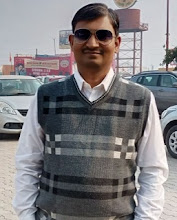CIVICS (VII)-LESSON- 3
HOW THE STATE GOVERNMENT WORKS
LESSON NOTES
___________________________________________________
v INTRODUCTION
Ø As you know that there are three levels of
Government -National, State and Local. In this chapter, we examine the work of
the government at the state level. How does this take place in a democracy?
What is the role of a Member of the Legislative Assembly (MLA) and Ministers?
How do people express their views or demand action from government? We look at
these questions through the example of health.
v DESCRIPTION OF THE STORY
Ø There is water shortage in many villages of
Patalpuram district. Many children died due to unclean water or water borne
disease as diarrhoea. This news spread through newspapers, TV Channels etc.
People gathered and organized a rally and gheraoed the MLA’s residence. The
opposition party leader was also with them.
v STATE GOVERNMENT
Ø The second level of government which includes
Governors, MLAs (Member of Legislative Assemblies) and Ministers is known as
State government.
Ø The election of legislative assemblies is held
in every five years in which people elect their representative from different
constituencies which are known as MLAs.
v CONSTITUENCY:
Ø A particular area from which all the voters
living there choose their representatives is known as constituency. The number
of constituencies depends on the population of the state. Every state has
different number of constituencies. Like Rajasthan-200, Haryana-90, UP-403,
Delhi-70 etc.
 |
| SEE THE NUMBER OF CONSTITUENCIES IN YOUR STATE |
v POLITICAL PARTIES
Ø A group of persons
who come together to participate in the election and to form the government is
called as political parties. There are different political parties as INC, BJP,
AAP, RJD, BSP, SP, etc.
v RULING PARTY
Ø A political party or
an alliance which have the majority (at least half or more member) in the
election is known as Ruling party.
v OPPOSITION PARTY
Ø The political party
which secures second position in the election is known as opposition party. It
may join by other political parties also.
Ø The Opposition
parties play a critical role in the healthy functioning of a democracy.
Ø They highlight
drawbacks in various policies and programmes of the government and mobilise
popular support for their own policies.
v COALITION GOVERNMENT:
Ø When one party does
not get a clear majority, a group of political parties form a coalition and
elect and forms a government, known as a coalition government. For example in
2014 In Delhi AAP and Congress join together to form the government.
v MLAs BECOME MINISTERS
Ø The leader of the ruling party who forms the
government is the Chief Minister.
Ø After that the chief minister
prepares the list of some Minister from their MLAs and sends to Governor.
Ø Then, the Governor of the
state appoints the chief minister and other ministers. These have dual
responsibility as Minister and MLA.
Ø The head of the state is the Governor while
the head of the government is Chief minister.
v DEBATE IN ASSEMBLY
Ø The debate is generally held in the Assembly
to discuss current problems.
Ø During debate time MLAs can express their
opinions and ask questions related to the issue or give suggestions about what
should be done by the government.
Ø The minister then replies to the questions and
assures the Assembly that adequate steps are being taken.
v
HOW THE STATE GOVERNMENT WORKS
Ø The Legislative Assembly is a place where
leaders debate and discuss on important issues and make important bills.
Ø The government also decides to make new laws
for the state regarding sanitation and health facilities.
Ø These laws are implemented through various
departments like public works department, agriculture, health and education.
v PRESS CONFERENCE
Ø A gathering of media persons who are invited
to hear about and ask questions on a particular issue and are then expected to
report on this to the larger public.
Ø After the discussion in the assembly, a press
conference is generally held by a particular minister who explains the steps
taken by the government.
Ø Whenever the government fails to satisfy
people’s needs, they organize meetings to voice their opinions and protest
against the government.
v TERMS
Ø Constituency: It refers to a particular area from
which all the voters living there choose their representatives.
Ø Majority: A political party whose MLAs have won
more than half the number of constituencies in a state can say to be in a
majority.
Ø Opposition
party: The elected
representatives who are not the members of the ruling party belong to the
opposition party. The representative together plays the role of questioning
government decisions and actions. They also raise new issues for consideration
in the Assembly.
Ø Ruling
party: The
political party that has the majority is known as the ruling party.
Ø Press
conference: A gathering
of media persons who are invited to hear about and ask questions on a
particular issue and are then expected to report on this to the larger public.
Ø Legislature :All the MLAs who gather together in the legislative
assembly are called the Legislature.







No comments:
Post a Comment